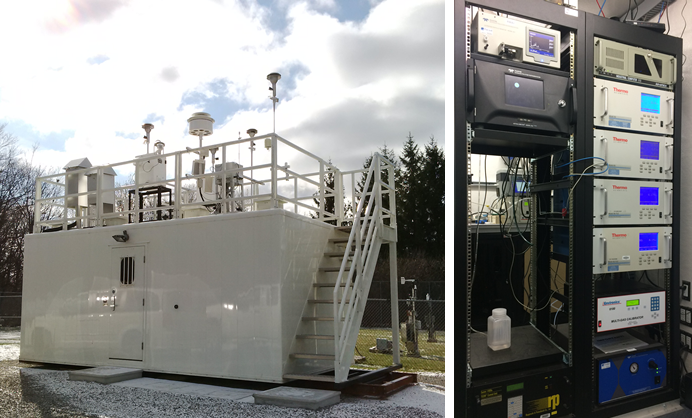Introduction
Protecting the air we breathe
The ministry protects Ontario’s air quality and with strong environmental standards that protect human health and the environment. The ministry does so by regulating air contaminants released by certain industrial and commercial facilities. Since air pollution arises from a wide range of activities and can cross boundaries, the ministry also works collaboratively with the federal government and other provinces and territories to develop standards and a framework for action. We also work with the U.S. to better understand the transboundary flow of air pollutants into Ontario.
Overall, ambient air quality confirms that Ontario’s actions to reduce airborne pollutants are effective and that regional air quality has been steadily improving in Ontario over the past 10 years for many common air pollutants.
While improvements have been made, we recognize more work needs to be done to ensure communities are protected from local sources of contaminants to air. The ministry will continue to hold facilities accountable, while working with municipalities, Indigenous communities, and industry to improve air quality and address unique challenges with tailored solutions.
Learn more about what Ontario is doing to protect our air.
About this report
This report summarizes 10-year air quality trends and the state of ambient air quality in Ontario during 2023. It reports on the major sources of emissions to air, pollutant concentrations measured across the ministry’s Air Quality Health Index air monitoring network, and Ontario’s performance against both provincial and federal ambient air quality criteria that were in effect in 2023. The ministry monitored ambient air quality in real time at 38 air monitoring stations in communities across Ontario in collaboration with the federal National Air Pollutant Surveillance (NAPS) program during 2023. This information was reported 24 hours a day, seven days a week, through the ministry’s public website.
The ministry’s Air Quality Health Index air monitoring stations are generally representative of ambient air quality which reflects the contribution of all sources of air contaminants. These air monitoring stations are sited to be representative of general population exposure and thus do not necessarily reflect air quality at locations within a community that may be influenced by nearby local sources of air contaminants such as large industrial facilities or major transportation corridors. Concentrations of some air contaminants in neighborhoods located near local sources such as an industrial facility may be higher than those measured at the ministry’s Air Quality Health Index air monitoring stations.
There are also local air quality monitoring networks operated by industrial associations in the communities of Hamilton (Hamilton Air Monitoring Network), Sarnia (Clean Air Sarnia and Area) and Sudbury (Greater Sudbury Air Quality).

Air Quality Health Index monitoring stations
This is a map depicting the 38 Air Quality Health Index air monitoring stations across Ontario that were in operation during 2023.
Notes:
- T: telemetry
- NO2: nitrogen dioxide
- PM2.5: fine particulate matter
- O3: ground-level ozone
- SO2: sulphur dioxide
- CO: carbon monoxide
- TRS: total reduced sulphur